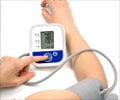- New combination pill consisting of three blood-pressure-lowering drugs could change hypertension guidelines globally
- The 'Triple Pill' helped a greater number of patients reach their blood pressure goals compared to those who took the usual care medications
- With blood pressure being a major contributor to the burden of heart disease, stroke, and kidney failure, the 'Triple Pill' could be a low-cost, effective way of helping countries around the world to meet their blood pressure targets
Dr Ruth Webster, of The George Institute for Global Health, said this was a significant advance by showing that the Triple Pill was not only more effective than standard care, it was also safe. "It's estimated more than a billion people globally suffer from high blood pressure with the vast majority having poorly controlled blood pressure. Our results could help millions of people globally reduce their blood pressure and reduce their risk of heart attack or stroke."
Traditional method of treating hypertension
Usually, doctors start early treatment for their patients with one drug at a very low dose, then advance the treatment over time by adding other drugs and by increasing the dosage to try to reach the target.The doctors ask the patients to come back at frequent intervals to see if they are meeting their targets; usually, multiple visits are required to tailor their treatments and dosage. This method has disadvantages of being time inefficient and costly. Also, since it is a slightly complicated process, doctors and patients often find it difficult to adhere to it. The author feels that the new approach is much simpler and one that works well.
Study - Combination pill versus usual care for hypertension
The trial enrolled 700 patients who were around 56 years and had a blood pressure of 154/90 mm Hg. It was conducted in Sri Lanka.The researchers gave their patients three drugs, each at half dose, in a single pill for the early treatment of hypertension.
The team randomly assigned the patients to receive either the combination pill or their doctor's choice of blood pressure lowering medication which was considered the usual care.
The study revealed that a significantly higher proportion of patients receiving the combination pill achieved their target blood pressure of 140/90 or less (the targets were lower at 130/80 for patients with diabetes or chronic kidney disease), compared with patients receiving usual care.
Professor Anushka Patel, Principal Investigator of the trial and Chief Scientist at The George Institute, said this was a significant improvement. "The World Heart Federation has set an ambitious goal that by 2025 there will be a 25 percent reduction in blood pressure levels globally. The Triple Pill could be a low-cost way of helping countries around the world to meet this target. This study has global relevance. While the most pressing need, from the perspective of the global burden of disease, is low-and-middle-income countries, it's equally relevant in a country like Australia where we're still achieving only 40%-50% control rates for high blood pressure."
The George Institute is next looking at ways to maximize uptake of the study results - like examining how well patients and their doctors will accept the combination pill, as well as looking into the cost-effectiveness of the medication which will be important for governments and other payers to consider.
Reference:
- American College of Cardiology. "Low-dose 'triple pill' lowers blood pressure more than usual care: No increase in adverse effects seen with three-drug combo in one capsule."
Source-Medindia















